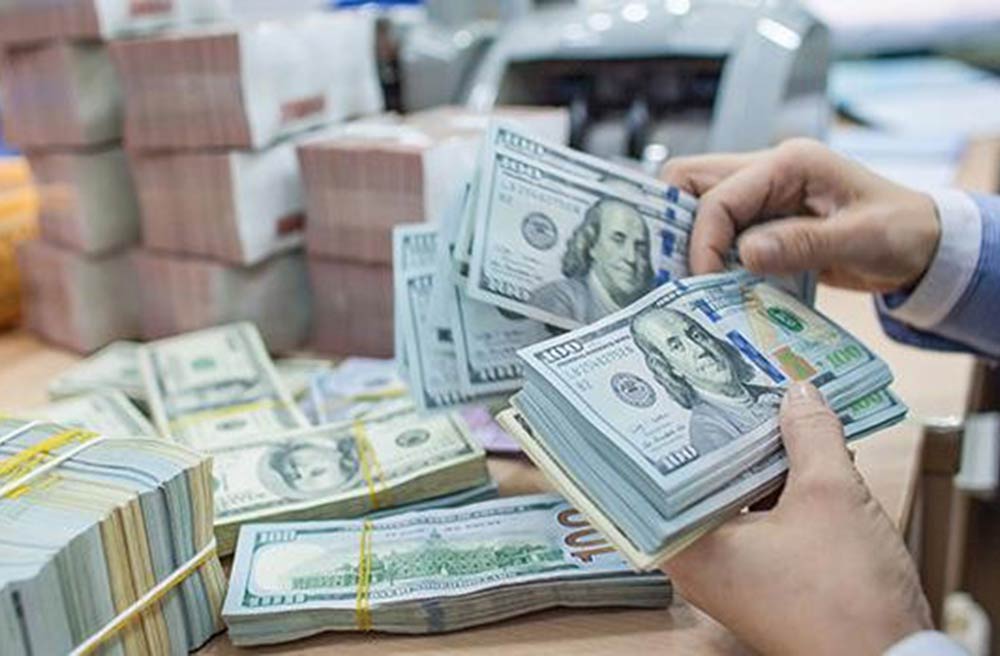Will the US dollar remain a safe haven currency?
We have questioned the safe-asset qualities of the US dollar on many occasions. But it seems that these question marks have grown in size following developments such as the surge in global uncertainty and the slump in crypto prices.

The alleged safe-asset allure of the US dollar bolsters the currency in times of global stress. For while major central banks have worked hard to alleviate US dollar shortages that can arise at such times, through central bank swaps, there is still the presumption that the US dollar rises when ‘bad’ things happen. Except that these bouts of safe-asset US dollar demand no longer seem quite as dramatic, even when big and very bad events occur, like the pandemic. This reflects not just central banks’ attempts to bolster US dollar liquidity but also the fact that the safe-asset allure of the US dollar has declined over time. This is based on a number of observations.
One is that central bank reserve managers who, are focused on safety more than most, continue to reduce the share of US dollars in their reserves. Moreover, it seems that many have shipped out the alleged safety of the US dollar for the safety of gold. In other words, they do not seem to have become less risk averse but instead shifted from one alleged safe asset to another.
A second issue is the way in which the US authorities have seemingly abused the US dollar’s dominant global position through sanctions, for instance, or kicking countries off the Swift payments system. Moves such as these are bound to make some governments and even private sector players more reticent to look at the US dollar as a safe asset. These are all things that we have talked about before. But it seems that the new US administration is giving even more cause for concern on this front.
For on top of the return to an aggressive tariff policy, we can add other disconcerting trends. For instance, the decision of US Treasury Secretary Bessent to skip the G20 meeting that’s currently taking place in South Africa raises questions about US global leadership. Undoubtedly, many would point out that this is not untypical of Trump administrations but many analysts still feel that this isolationism is rising to new heights in this second term. The administration’s focus on doing individual ‘deals’, rather than seeking multilateral agreements, shifts the US’s focus from leading a global effort for mutually beneficial policies, to a system in which the US seeks individual ‘wins’ at the clear expense of others.
Another way in which Steven Barrow, Head of Standard Bank G10 Strategy feels that the safe asset status of the US dollar could be undermined is through the administration’s embrace of crypto currency and its rejection of a central bank digital currency (CBDC). “If we take the former, crypto currency, we think it is notable that the traditionally weak inverse correlation between crypto currencies and the US dollar has been replaced by a more positive association”, said Steven Barrow.
In the past, bouts of global uncertainty, which might have weighed on crypto currencies were usually associated with US dollar strength. But since the US election, crypto currencies and the US dollar have moved together; both up before the inauguration and, more recently, down. The US president’s recent embrace of crypto, through talk of a strategic crypto reserve for instance, might not only make those outside the US feel that the administration is somehow less enthused about the US dollar; it might also mean that the US dollar becomes vulnerable if crypto prices plunge. The flipside is that the US dollar might prosper if crypto prices start to surge again, although the stronger relationship exists when crypto prices are falling, not rising.
But does any apparent erosion of the US dollar’s safe asset status imply that it will fall? Of course not. “It just means that it will likely be weaker than it would have otherwise been if the safe-asset status had remained unchanged. In the current context, it may mean that even if global policy uncertainty stays high, or rises even further, the dollar won’t necessarily rise with it”, emphasized Steven Barrow.








